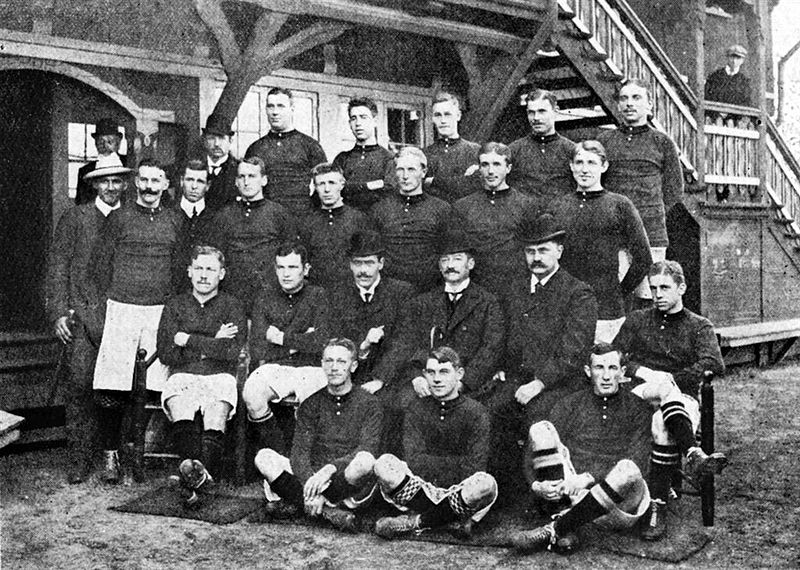
Football is not only the most popular sport in Denmark, it is also the country’s official national sport. When a check was done in 2012 there were 356,754 players playing for 1,635 clubs registered with the Danish Football Association.
The top-flight in Denmark is known as the Superliga and contains fourteen teams each doing battle to be named as the Danish champions, with others hoping to avoid the drop down to one of the lower divisions.
Though the Danish have enjoyed some success over the years, they didn’t actually get involved in the big international tournaments until the 1980s.
Despite this, Denmark has a rich history when it comes to football. Kjøbenhavns Boldklub, which was one of the clubs that became FC Copenhagen, is the oldest sports club in continental Europe. It was formed in 1876 and football was added to the roster two years later. Until 2009 the FC Copenhagen reserves played under the name of KB, though it has now become its own club again.
Introduction to Danish Football
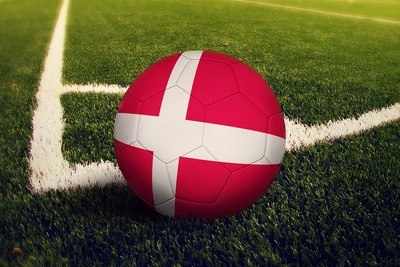 On the international stage the Denmark national team has a decidedly interesting history. Despite winning the Intercalated Games in 1906, which was an unofficial football tournament that was part of that summer’s Olympics, and winning the Silver medal at the official Summer Olympics in 1908 and 1912, Denmark refused to allow its internationals to become professionals in foreign leagues. That meant that they remained an amateur side until that rule was rescinded in the 1980s. They won another Silver medal at the 1960 Summer Olympics but they could have won so much more in the intervening years.
On the international stage the Denmark national team has a decidedly interesting history. Despite winning the Intercalated Games in 1906, which was an unofficial football tournament that was part of that summer’s Olympics, and winning the Silver medal at the official Summer Olympics in 1908 and 1912, Denmark refused to allow its internationals to become professionals in foreign leagues. That meant that they remained an amateur side until that rule was rescinded in the 1980s. They won another Silver medal at the 1960 Summer Olympics but they could have won so much more in the intervening years.
Instead, they didn’t qualify for a FIFA World Cup until 1986 when they travelled to Mexico and finished top of a group that contained West Germany, Uruguay, and Scotland. They were beaten 5-1 by Spain in the last sixteen, but they still left the tournament proud of their achievement. Better was to come six years later, however, when they won the UEFA European Championship in Sweden, beating the World champions Germany in the final.
We’ll tell you more about the Denmark national team further on in this page, as well as give you some information of the Danish Superliga and fill you in further on the history of football in Denmark. First, though, we’ll tell you all about the sorts of stadiums that you’ll find if you decide to head over to Denmark and watch a match or two.
Danish Stadiums
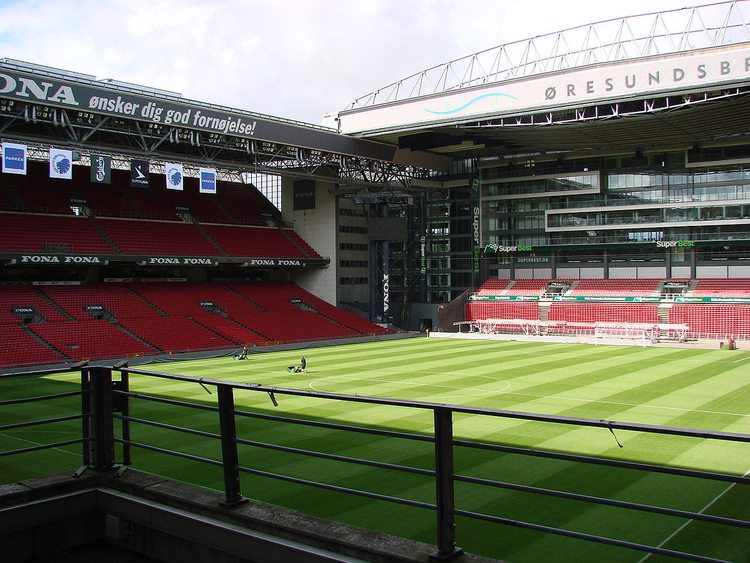
Around 5.6 million people live in Denmark, which is roughly equivalent to the population of Scotland. So whilst football may be the most popular sport in the land that does not necessarily mean that the stadiums are gigantic monoliths that could welcome in hundreds of thousands of people.
In fact, the largest ground in Denmark is Telia Parken and that can house just over 38,000 supporters. The majority of Superliga stadia are significantly smaller, with around 10,000 supporters able to be housed within their stands.
When it comes to design the vast majority of Danish stadia take after their English counterparts. They are about convenience and form over how amazing they look and most are built in the ‘English Style’ of having a separate stand on each side of the pitch.
Some of them, especially the more modern ones, follow the ‘European Style’ of having a bowl of continuous seating that runs right the way around the playing surface.
Danish Leagues
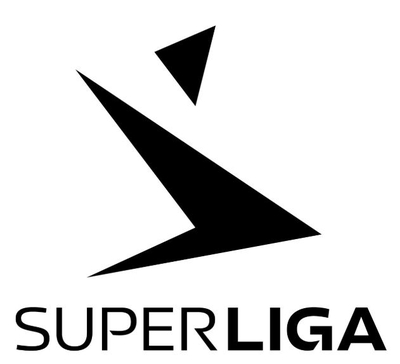 The Danish Football Association governs four levels of the game in Denmark. The first three divisions are known as the Danmarksturneringen, or Danish Championship. They share a common set of rules that are familiar to most players and fans of professional football.
The Danish Football Association governs four levels of the game in Denmark. The first three divisions are known as the Danmarksturneringen, or Danish Championship. They share a common set of rules that are familiar to most players and fans of professional football.
The fourth level of the Danish footballing pyramid is known as the Danmarksserie, or Denmark Series. That is comprised of three pools of fourteen clubs, and below that is a series of regional associations.
The Superliga was founded in 1991, replacing the Danish First Devision as the country’s top-flight. Back then just ten teams competed in the league, expanding to twelve for the start of the 1995-1996 season.
An entirely new league structure was introduced for the start of the 2016-2017 season and this included expanding the league once more to allow fourteen teams to compete. After 26 matches the league is split in two, with the top six fighting it out between themselves for the championship and the bottom eight clubs splitting again into two further groups. Those groups decide who will get relegated and who will enter a play-off for a Europa League spot.
Denmark National Team
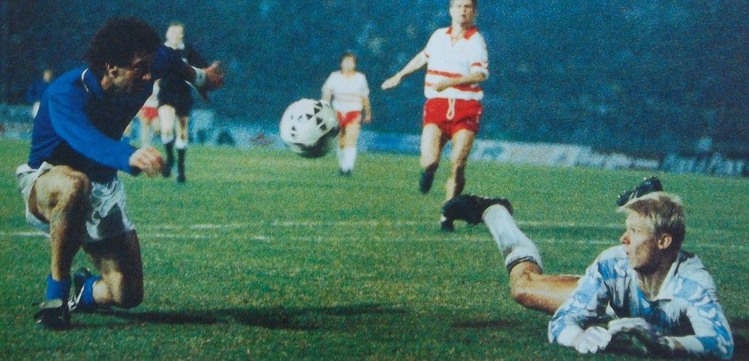
The Danish Football Association, or the DBU, was founded in 1889 and was the first FA to be formed outside the realm of Great Britain and Ireland. Despite winning the Intercalated Games in 1906, the Denmark national side didn’t start playing football officially until the 1908 Summer Olympics. That means that the DBU refuses to recognise the country’s first major international tournament win. No great surprise considering that the tournament itself wasn’t an official part of the Olympic Games.
1992 was Denmark’s high point on the international stage. They travelled to the UEFA European Championship tournament in Sweden and finished second in the group stage behind the hosts. They only managed one win, beating France, drawing with England, and losing to Sweden. The competition was much smaller back then than it is now, so only the top two teams from the two groups moved forward to the semi-final stage. Denmark took on the then defending European Championship the Netherlands and beat them on penalties, setting up a final against the defending World Cup holders Germany. They won 2-0 in the final, claiming their first official major tournament win.
Their longest serving goalkeeper, Peter Schmeichal will be recogniseable to football fans in the UK as he was also Manchester United’s number one for their most successful period during the 90’s. His son Kasper would go on to win the Premiership with Leicester years later.
Key Stats
| Denmark National Team Statistics | |
|---|---|
| Year Formed | 1889 |
| Home Stadium | Telia Parken |
| Stadium Capacity | 38,065 |
| Major Honours | European Championships (1992) |
| Current Manager | Kasper Hjulmand |
| Top Scorer | Poul Nielsen, Jon Dahl Tomasson (52) |
| Most Caps | Peter Schmeichel (129) |
| Best Performance at World Cup | Quarter-Finals (1998) |
| Best Performance at European Championships | Winners (1992) |
| Kit Colours | Red and White (Home), White and Red (Away) |
History Of Football In Denmark
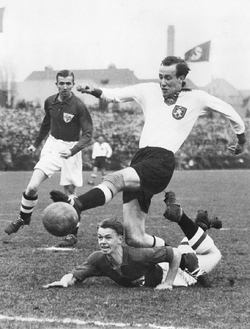
Copenhagen was a top location for middle-class British migrant workers in the late part of the nineteenth century. Plenty of Danish families made the return journey, meaning that the actual origins of football in Denmark are something of a murky business; was it brought into the country by British sailors based in the country’s capital, or Danish expats returning home after living in Britain for a time bring it with them? It’s difficult to say for sure.
The only thing we can say with any certainty is that the Dansk Boldspil Union, or Danish Football Association, was founded by well-educated Danes who saw the sport as an amateur venture.
In 1898 a Danish visitor to Scotland watched the Scots take on the Welsh in a fame at Fir Park. Afterwards he invited a team to take part in the International Festival of Sports and Gymnastics in Copenhagen. It was an amateurs-only event, so Queen’s Park were the team that were asked to go along.
They were the best known amateur side in Scotland, with all of the other major clubs having turned professional. That wasn’t the first time that football was played in the country but it was credited with making the sport popular. 11,000 people turned up to watch them go head to head with a Danish select XI.
